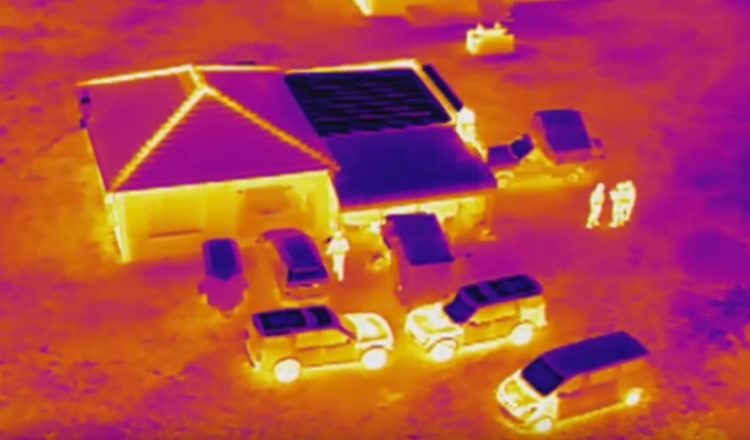For months now, politicians have debated how best to address security concerns on America’s southern border. The president has championed a physical barrier or wall that would span the majority of that border and impede the flow of people looking to cross into the United States illegally. Many on the other side of the aisle contend that border security could be better accomplished without investing billions in a barrier, instead focusing on a laundry list of different methods and technologies to curb the flow of people illegally entering the country.
As is so often the case in politics, both sides may have some valid points. A physical barrier, while not impenetrable, would certainly offer a greater level of deterrence than open desert, but it’s hard to dismiss concerns about tunneling under, climbing over, or otherwise circumventing such an obstacle. Even with President Trump’s proposed boost in funding for Border Patrol officers, there is still too much territory to easily patrol and police.
Anyone who’s been on a cattle ranch knows that maintaining the fence line is among the most time-consuming parts of the job. Dozens of miles of intact fence don’t amount to much if one area becomes compromised, so ranchers have to regularly patrol the perimeter of their fences to ensure they’re intact and to prevent cattle from getting out (or predators from getting in). Given the more than 2,000 miles of border stretching between Mexico and the United States, those same perimeter checks have become an incredibly daunting task. Areas that are difficult to access or a lower priority could quickly become compromised without regular observation.
That’s where the same sort of technology currently employed to monitor oil pipelines could change the game. The stakes when it comes to oil pipeline regulatory compliance and physical integrity are extremely high: An issue with a pipeline could cost a company millions (or more) in lost revenue and federal fines, not to mention concerns about the environmental impact of an oil spill. But, like the border, these pipelines can span distances that are simply too vast for continuous manned observation.
So what do you do when you need to keep an eye on a thousand miles worth of oil pipeline? You send in the drones.
Companies like Stealth Air Corp specialize in the use of drones for things ranging from land surveying to assessing structural damage to buildings, but it’s their approach to oil pipeline surveillance that seems like it could serve as a powerful tool for America’s border security efforts. When it comes to the integrity of an oil pipeline, much like the integrity of border security, rough terrain or bad weather are no excuse for failure. As a result, companies like Stealth Air Corp have built their drones to hold up to the elements while being rapidly deployed from self-powered landing stations installed at various points along the pipeline.
“One of our key offerings is the the landing pad technology—that’s really what makes our drones autonomous,” Nicholas Addonisio, president and chief technology officer for Stealth Air Corp, told NEWSREP. “Our solar-powered landing pads eliminate the need to send personnel out to program, maintain, and charge the drones.”
Addonisio contends that, until you can reduce human involvement in day-to-day drone operations, companies and federal agencies won’t really begin seeing a substantial return on their investment. That’s where Stealth Air Corp’s landing pad charging stations promise to revolutionize the industry: by making drone sentries on patrol a largely autonomous venture, providing support to personnel rather than operational obligations.
Stealth Air Corp’s drones police a length of the pipeline, charging at scheduled intervals and using a variety of onboard sensors to detect issues and notify operators so personnel can be deployed directly to locations that need human intervention. Some UAVs employed by Stealth Air Corp can even launch smaller drones to help monitor situations or pursue multiple suspects, offering a great deal of capability to assets on the ground tasked with pursuing potential border jumpers.
https://youtu.be/CkU3JrOiyKw
UAVs like those employed by Stealth Air Corp could not only patrol large expanses of territory, they could be deployed to trouble spots for real-time monitoring of situations as they unfold, providing support to security personnel prior to and once they arrive on the scene.
Already have an account? Sign In
Two ways to continue to read this article.
Subscribe
$1.99
every 4 weeks
- Unlimited access to all articles
- Support independent journalism
- Ad-free reading experience
Subscribe Now
Recurring Monthly. Cancel Anytime.
Drones equipped with long-range and thermal imaging capabilities would be particularly well suited for border security operations. Drones could charge and patrol at random intervals, making it impossible for potential border jumpers to anticipate gaps in coverage. Because of the altitude and distance at which these UAVs are able to identify people heading for gaps in a border barrier or the barrier itself, some may not even be aware that the drones are present until after Border Patrol has arrived on the scene.
Republicans and Democrats have both stated in no uncertain terms that border security is an important issue. The real political division seems to be based on methodology and approach. By combining new technology like UAV monitoring with the old-fashioned but often effective barrier approach, the result is a sum greater than its parts. UAV patrols could help enable the Border Patrol to respond more quickly and efficiently, reducing wasted man hours spent traversing the border and instead focusing in on exactly where crossings are taking place.
“These are discreet electric vehicles that are self-sufficient and self-sustaining,” Addonisio explains. “And because they’re solar charged, they offer the added benefit of being much better for the environment than off-road vehicles used to patrol similar areas.”









